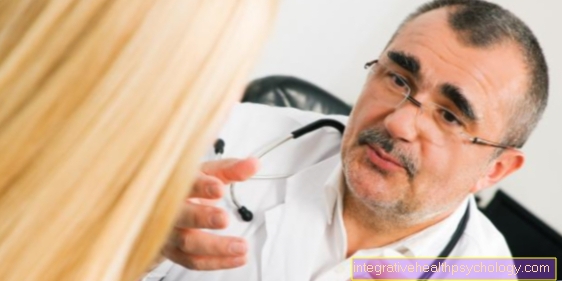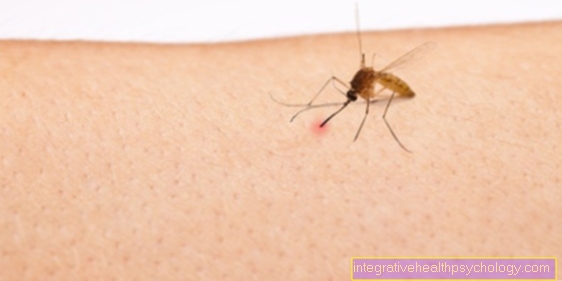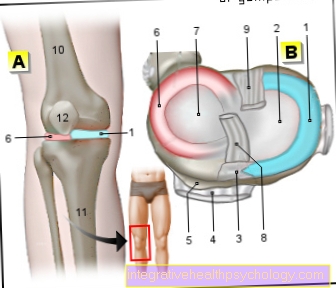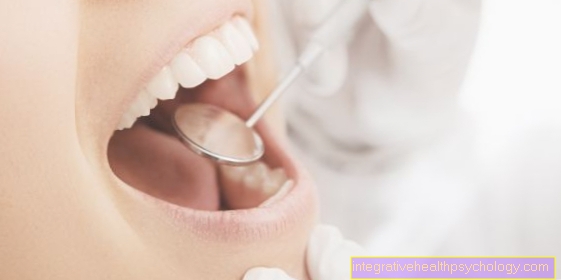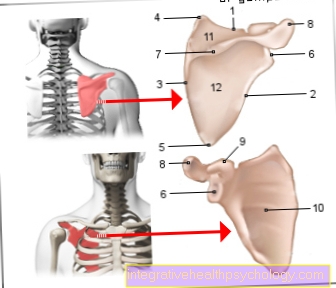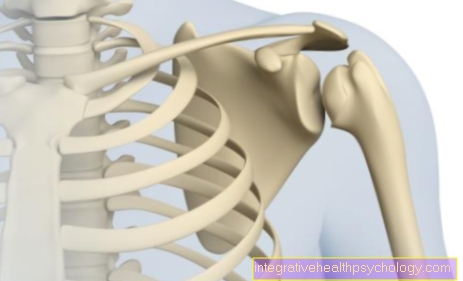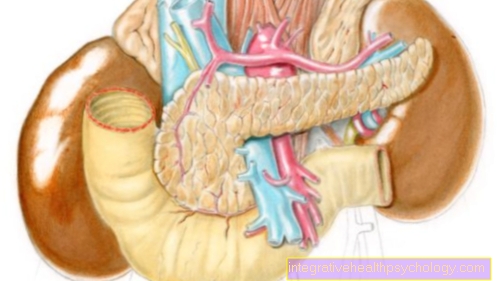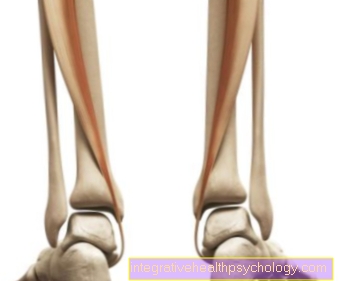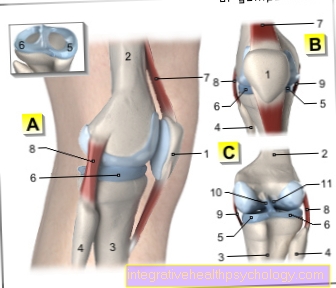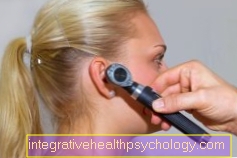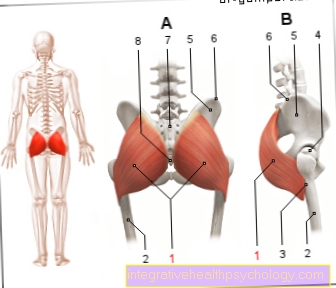Speech therapy
definition
Speech therapy is a medical and therapeutic field that deals with both diagnosis and therapy of speech, voice, swallowing or hearing disorders in patients of all age groups. With the help of special exercises, speech therapists try to identify the complex disorder patterns present and to improve communication skills and any swallowing disorders that may be present. Speech therapy is based on the patient's cooperation in regular sessions to learn and apply specific exercises that are specially adapted to the disorder in question. Medicines are not included in the treatment.

Who benefits from speech therapy?
Various disorders can be diagnosed and treated as part of speech therapy. Speech therapy benefits patients of all ages who suffer from speech, voice, swallowing or hearing disorders. Depending on the age and the existing disorder, the therapy concepts and goals must be individually adapted.
The areas of application of speech therapy can differ significantly in children and adults. Children benefit from speech therapy primarily in the context of speech development and articulation disorders.
Speaking and understanding language in children develop in a specific order with specific milestones that should be achieved in a certain amount of time.
If this happens delayed or incorrectly, it can lead to a significant linguistic deficit and an increased risk of reading and spelling difficulties. Children with an articulation disorder such as lisp also benefit from speech therapy. It is also noticeable in these children that they have an additional swallowing disorder in addition to lisp.
Read more on this topic at: Dyslexia or reading and writing difficulties: a conceptual demarcation
In children with a hearing impairment, a delayed language development often develops in the course of the process, as their ability to speak as well as concept formation and language comprehension are affected. They too can improve their communication skills through speech therapy. In addition, speech therapy can also help children with disorders of the flow of speech, such as stuttering, or with disorders of speech production due to congenital malformations.
Read more about this at: Hearing impairment in children
In adults, speech, speech and voice disorders occur primarily in the context of damage to the brain. These can occur, for example, as a result of a traumatic brain injury, a stroke, a tumor or a degenerative disease such as multiple sclerosis or Parkinson's disease. Speech therapy can improve speech production, speech motor skills and possibly existing swallowing disorders in these patients.
How does the speech therapy treatment work?
The speech therapy treatment can be started acutely during a hospital stay, in a rehab clinic or on an outpatient basis in a speech therapy practice.
At the beginning of each treatment, a detailed diagnosis is carried out to clarify the disorder. The attending speech therapist uses targeted tests to determine which areas of speech are impaired and, above all, to what extent these disorders are present.
In conjunction with the medical findings, the results of the tests form the basis for planning the therapy concept that is individually tailored to the patient.
The speech therapy treatment can extend over a long period of time and is based on various exercises and techniques. An essential component are different speech, breathing and swallowing exercises, as well as the development of certain motor speaking techniques. Detailed advice to patients and their relatives about the disease, its causes and possible treatment goals is of particular importance.
In addition, instructions should be provided for performing the exercises independently so that the success of the therapy can be further improved. How quickly the desired treatment success is achieved depends not only on the disorder and its extent, but also on the cooperation of the patient and their relatives and requires a lot of patience and perseverance. Overall, however, it can be said that speech therapy usually always helps to improve and sometimes can even almost completely eliminate the problem.
Who bears the costs of speech therapy?
If a patient needs speech therapy, the question always arises as to who will pay for the treatment. The prescription for the need for speech therapy must be issued in advance by an ear, nose and throat specialist, a neurologist, a pediatrician or an orthodontist.
In some cases, a prescription from your family doctor is sufficient. If this is medically necessary, the statutory or private health insurance company will usually cover the costs of the therapy. Children and young people up to the age of 18 are generally exempt from additional payments. An additional payment may be necessary for adults over the age of 18. That depends entirely on the health insurance company and the need for treatment.
For patients who are not exempt from co-payments, a co-payment of 10% of the health insurance rate as well as a supply fee is due. The therapy of reading and spelling weaknesses, which can also be undertaken as part of speech therapy, is usually one of the private benefits and is not covered by health insurance.
What exercises can I do myself?
A successful speech therapy treatment takes a lot of time and patience and is only successful if the patients show a great deal of initiative to do the exercises at home outside of the practice hours. So that the patients are also motivated and supported in performing these exercises, it is therefore of great importance to include the family or important caregivers in the treatment and to train them in the correct execution of the exercises.
There are many easy and quick exercises that can also be performed in everyday situations and can significantly improve the success of the therapy. Especially with young children there is the challenge of incorporating these exercises into everyday life. This can be achieved in a playful way or in the form of small competitions. Speech, speech and voice disorders can be quickly improved by making easy lip, tongue and puff movements.
Lip exercises strengthen the lip and tongue muscles, prepare the formation of sounds and improve the activity of the diaphragm. Overall, they are used for language preparation. Simple lip exercises include drinking from a straw or blowing out a candle. The muscles are also stimulated by holding a pencil with the lips or inflating a balloon.
Tongue exercises also strengthen the muscles and serve to promote language. For example, it is helpful to stick your tongue out and move it in different directions. You can also walk along the row of teeth with your tongue or try to move the tip of the tongue slowly towards your nose. You can also try to roll your tongue or click your tongue.
When patients have a problem with pronunciation, such as lisp, it is often helpful to practice humming and hissing. This trains the perception of how the sound should normally sound.
Many patients and especially small children often find it difficult to differentiate the B and the P from one another. This can be promoted, for example, by using a sheet of paper. You take a piece of paper, hold it in front of your mouth and say words with B and P alternately, with the paper moving with the P.
Breathing exercises such as holding your breath or deliberately puffing out a small amount of air slowly can also be helpful for speech and speech disorders. This can be practiced at home by slowly blowing out a candle, trying to move a cotton ball around by blowing alone or, especially with small children, blowing soap bubbles in a playful way.
In the case of patients with swallowing disorders, care can be taken at home to eat slowly and only consume small portions. In addition, you should always keep your mouth closed every time you swallow. Swallowing can be practiced well with slightly thickened foods or yogurt. Through dry swallowing exercises, the throat muscles can be additionally strengthened and further promote the success of the therapy.
Recommendations from the editorial team
- What are speech disorders?
- Everything about language disorders in children
- Everything about the vocal folds
- Everything about the vocal cord
- Hoarseness - What To Do?




